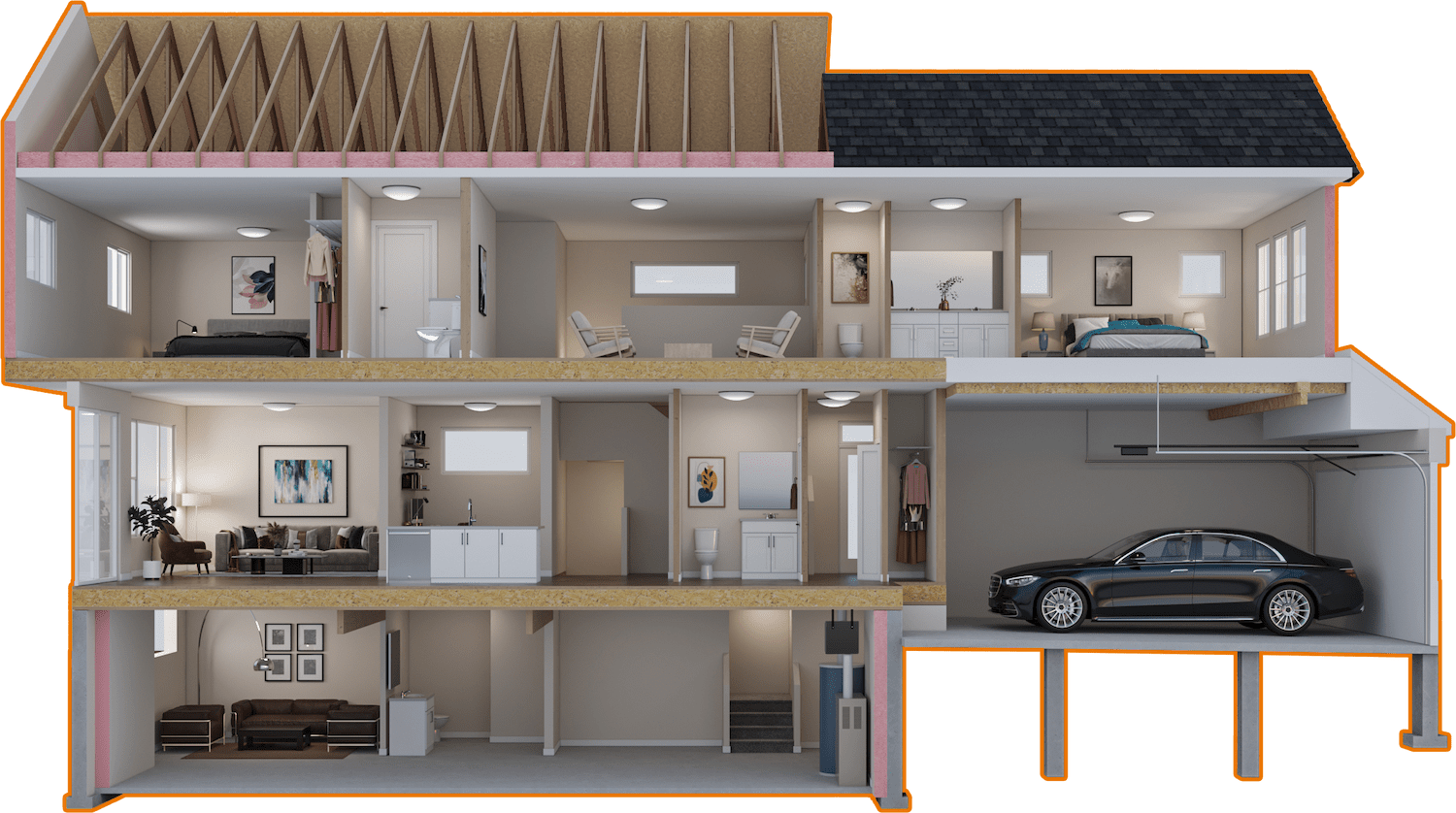College Isn’t the Only Way. The Trades Are Wide Open.
You don't need a degree to experience career success.
Some people prefer to get paid to learn, enter the workforce faster, and enjoy the perks of always being in demand.


Electricians, carpenters, plumbers, HVAC techs — every trade plays a key role. Each one has its own path, from hands-on apprenticeships to in-school programs.
The cool part? You don’t have to wait until after graduation. You can start in Grade 10 through the Registered Apprenticeship Program (RAP), earning credits while getting real experience on job sites. After high school, you can work as a labourer, take on an internship, or go straight into an apprenticeship. There’s no one-size-fits-all path — just options that match your goals, strengths, and style.


If you enjoy hands-on work, creativity, and seeing fast results, cabinet installing could be a great fit. You get to move from project to project, create beautiful spaces, and keep things fresh — no boring days here.


Carpenters are builders at heart—creative, practical, and hands-on. If you like making things come to life and working with tools, this trade delivers from blueprint to build.


Concrete work is for people who are strong, focused, and enjoy seeing instant progress. If you enjoy early mornings outdoors, staying physically active, and muddy boots this role puts you at the base of every home.


Most construction managers start in trades before progressing into this position. If you're organized, a natural leader, and like keeping everything on track, this role puts you in control. It’s ideal for big-picture thinkers who still appreciate the details.


Cribbing is for early risers who like hard work, team environments, and watching homes rise from the ground up. It suits people who want to be there from the very first step of the build.


This trade is great for those with a steady hand, a strong work ethic, and a drive for clean finishes. If you enjoy fast-paced work where you can see the skeleton of a house take shape, drywall is where it's at.


Electricians need to be good at problem solving, working with their hands, and understanding how things like circuits and wiring work.



This trade is great for people with an eye for patterns, textures, patience and precision.


Framers are fast, focused, and love seeing progress go up in real time. If you’re strong, coordinated, and love outdoor work, framing puts you at the core of every build.


Gasfitters are precise, cautious, and work by the book—because safety matters. It’s a great trade for responsible people who like steady, high-demand work.


If you love machines and want to be in the driver's seat—literally—this job is for you. It suits people who are coordinated, calm under pressure, and enjoy working outdoors.


If you have an eye for detail and like seeing a space come together, this trade is where rough construction turns into polished living. It’s perfect for people who like tidy, satisfying work.


This trade is for people who like physical work and don’t mind tight spaces. It’s a key job that helps homeowners stay warm in winter and cool in summer, without sky-high energy bills.



Painters are patient, clean, and have a steady hand. If you enjoy creative work and making spaces feel complete, painting is a rewarding, low-barrier way to break into the trades.


If you’re practical, methodical, and like solving messy problems, plumbing is always in demand. It’s a trade where your work really matters—and it pays off with stability and strong wages.


If you’re mechanically minded and like hands-on problem solving, this is a cool career—literally. It’s ideal for people who enjoy precision work and want to master in-demand systems.


This is outdoor work for people who don’t mind heights, are safety focused, and enjoy seeing the impact from the street.


Great for people who enjoy working with tools and metal, this trade combines math, precision, and hands-on fabrication. It suits those who want to build systems that keep homes breathing.



Tile setting is detail-heavy work for people with an eye for patterns and patience. If you’re artistic and enjoy transforming kitchens, bathrooms, and entryways.


This is the perfect starting point if you’re not sure where to begin. You’ll get exposure to multiple trades, learn on the job, and figure out which path fits you best.


This job suits hands-on workers who don’t mind getting dirty to protect what’s above ground. If you like practical, behind-the-scenes work.







You don't need a degree to experience career success.
Some people prefer to get paid to learn, enter the workforce faster, and enjoy the perks of always being in demand.

Did you know?
There is over $7 million grants and bursaries available through the BILD Alberta Scholarships for Construction Careers at NAIT and SAIT
fun fact:
You can start your apprenticeship journey as early as Grade 10 through the Registered Apprenticeship Program (RAP).

Save money on heating and cooling costs by keeping the heat in during the winter and out during the summer. Triple-pane windows and a properly sealed building envelope with R40 attic, R20 basement and exterior wall insulation create an air-tight seal to prevent heat loss.
See all heating and cooling featuresReduce your overall water consumption with an 80-gallon electric hot-water tank and low-flush toilets, lowering water usage by 20%.
See all water-conservation featuresReduce your overall energy consumption with LED lights throughout your home—they use 90% less energy than a traditional lightbulb.
See all lighting and appliance featuresAn energy-efficient 2-stage gas furnace has a 96% annual fuel utilization efficiency (AFUE) rating, saving you money on heating bills. A heat recovery ventilation (HRV) system changes and filters the air in your home once every 2.5 hours, protecting your family from allergens and mould caused by moisture and airborne particles.
See all air-quality featuresSmart-home features like a smart thermostat allow you to monitor the temperature and humidity in your home right from your mobile device. A leak sensor helps prevent hazardous mould growth and gives you peace of mind.
See all smart-home features













R40 attic insulation with an air-tight seal to prevent heat loss, especially during the cold winter months
R20 exterior wall insulation, installed between 24" studs
R20 basement exterior insulation (frost wall)
Additional insulation in your attached garage to reduce heat loss
Energy-efficient 2-stage gas furnace with 96% annual fuel utilization efficiency (AFUE) rating
Triple-pane windows
Third-party blower door test
Water-saving faucets and plumbing fixtures
Low-flush toilets that reduce water usage by 20%
80-gallon electric hot-water tank
LED lightbulbs, which use 90% less energy
Enhanced-efficiency ENERGY STAR® appliances
EnerGuide label to provide you with added resale value and an opportunity for an energy rebate
A heat recovery ventilation (HRV) system to change and filter the air in your home once every 2.5 hours
Energy-efficient, 2-stage gas furnace with a 96% annual fuel utilization efficiency (AFUE) rating
Sealed building envelope to keep mould-causing moisture out of your walls and ceilings
Smart thermostat
Smart front-door deadbolt (community specific)
Smart garage-door controller (community specific)
Smart LED light controls (optional upgrade)
Smart doorbell video camera (optional upgrade)